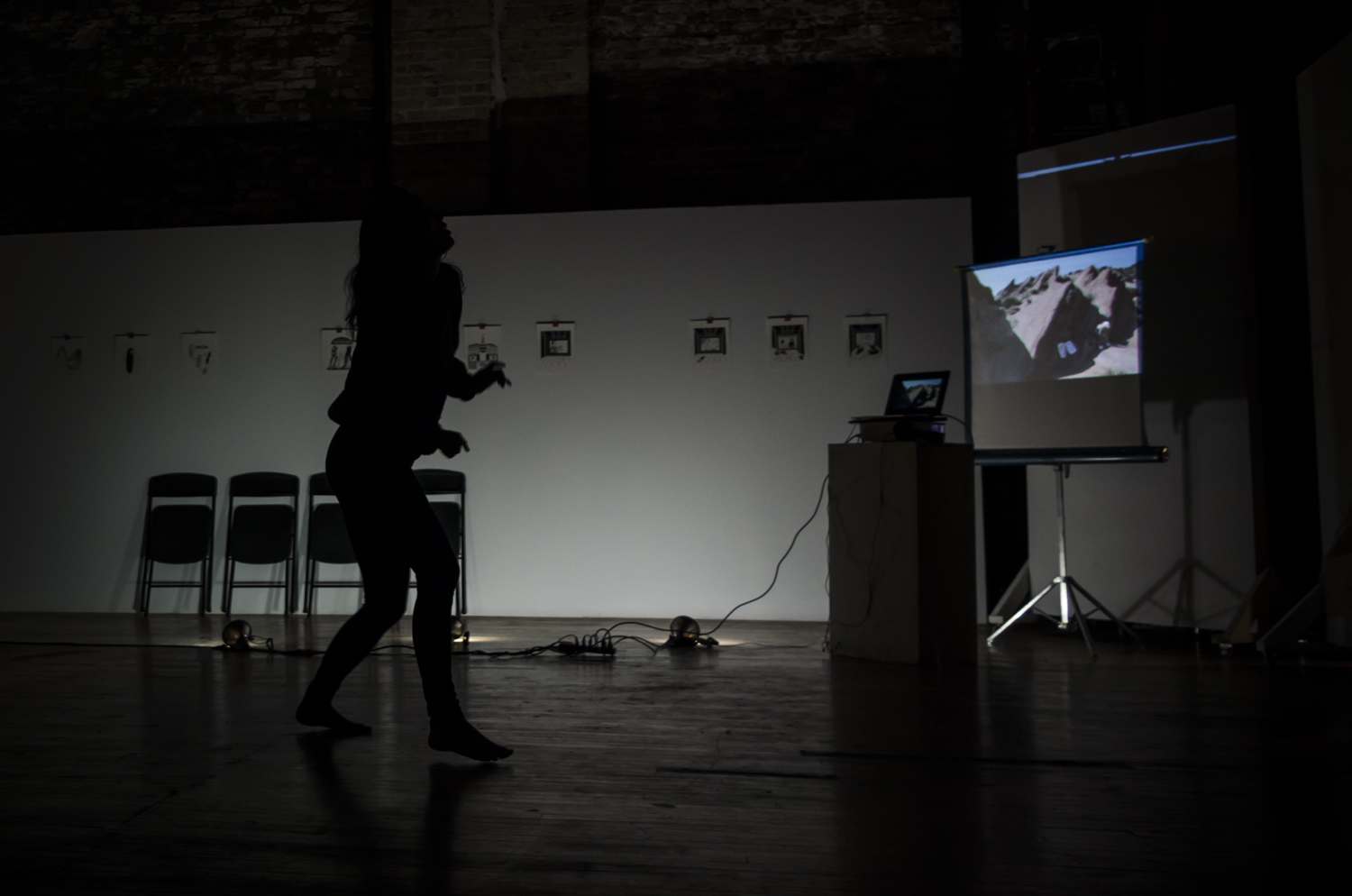









Sex Habits (2016)
Expanded cinema, immersive event, radical community arts organizing, DIY curatorial projectArcher Ballroom, an artist-run DIY gallery in Bridgeport, Chicago, April 2016
SEX HABITS took the form of a party, a non-linear immersive art event where tracks were interrupted by performances and videos, a space to take a look at the work of printmakers and other visual artists, leather work, collage & photography. A place for brains and haptics to be stimulated: an erotic healing station, a bondage workshop, a peep show booth about sexuality and cinema, not quite impromptu readings and other interventions.
Sex Habits was an art show, a party, and an immersive art piece itself. The idea for Sex Habits came from an article proposing that monosexuality (being attracted to only one gender) is genital fetishism. While none of the work in this show makes this formulation explicit, the limitations of vanilla heterosexuality are an underlying theme. This work explores the liberating potential of queer sex and highlights differences between fetish and kink, BDSM practices, and sex as death drive. The event was about public sex, the politics of respectability, revenge feminism, sex in the digital age, cam gir(rr)ls, intimacy, the ins and outs of penetration, porn, exoticism and objectification, dreams of sex with aliens, toys, childhood, non-genital-centric erotics, and spurious feelings. Our proposition was that our sexualities, kinks, and also rape culture in its current form have to be discussed together with the history of cinema.
Looking back on Hay's code era films, post-code exploitation films and grindhouse cinema reminds us of a context where violence subsuming sex was understood as transgressive, even if women had to pay the price with symbolic and physical violence. The censorship era propelled a kind a visual culture that licensed violent patriarchal representation on screen, but also represented the 'others' and their revenge. In our endeavor to grasp vintage erotica, we encounter representations of rape and domination that persist today. These articulations are complicated; there is no straight answer which means there is still space to think. Looking at expanded cinema also means taking the measure of how it has shaped our desires and, to some extent, our hetero, lesbian, and gay identities, as well as their queering. How the hetero matrix- the damsel in distress or the myth of the 'vagina dentata’- are performed but also parodied is an example of the tricks that cinema and political art at large can sway. In its infinite repetition of what appears to be the same, cinema as well as sex in the digital age remain capable of newness and freedom, or at least we like to believe so.
Sex Habits’ time and space were non-linear, it was one of our objectives to push the boundaries of what can be handled together.